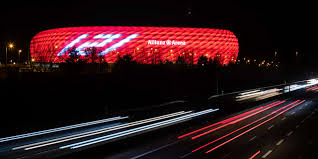
Introduction to the EIHL
The Elite Ice Hockey League (EIHL) has become a pivotal component of the UK’s sports culture since its establishment in 2003. With a growing fan base and increasing levels of competition, the league showcases the skill and determination of ice hockey teams across the nation. As the popularity of ice hockey surges, understanding the EIHL’s structure, development, and upcoming challenges is crucial for fans and sports enthusiasts alike.
Structure and Teams of the EIHL
The EIHL currently comprises ten teams from across the UK, including notable clubs such as the Sheffield Steelers, Belfast Giants, and Nottingham Panthers. Each season, these teams compete for the prestigious EIHL championship, culminating in an exciting playoff series. The league operates under a centralized structure that allows for uniform rules and regulations, making the EIHL an attractive arena for both players and coaches.
Recent Developments and Challenges
As of October 2023, the EIHL is entering its 21st season, defined by evolving challenges, particularly concerning the impacts of the pandemic on attendance and revenue. The 2022-2023 season saw a significant rebound in fan attendance, with many arenas reporting higher turnout compared to pre-pandemic levels. Furthermore, the league has also focused on enhancing player welfare and safety, implementing stringent measures aimed at reducing injuries, particularly concussions.
Moreover, the EIHL has begun to expand its international reach, with several players hailing from North America and Europe, thus enhancing the quality of the game. This expansion has been beneficial in elevating the league’s competitive standards as well as attracting new fans.
Community Engagement and Future Prospects
The EIHL has made great strides in community engagement, launching numerous initiatives aimed at promoting youth involvement in ice hockey. By hosting free training sessions and school visits, the league aspires to inspire the next generation of hockey talent across the UK. The significance of these initiatives cannot be overstated, as they help build a sustainable future for the sport.
Conclusion
The EIHL’s trajectory shows promise as it continues to evolve within the realm of UK sports. With increasing investment, international appeal, and robust community initiatives, the EIHL stands as a cornerstone for ice hockey in Britain. As the league enters its next chapter, one can expect it to cement its legacy and promote ice hockey as a key sport in the UK, fostering a passionate fanbase and nurturing new talent.
You may also like

Timberwolves vs Suns: Game Highlights and Analysis

The Life and Legacy of Sean Avery
